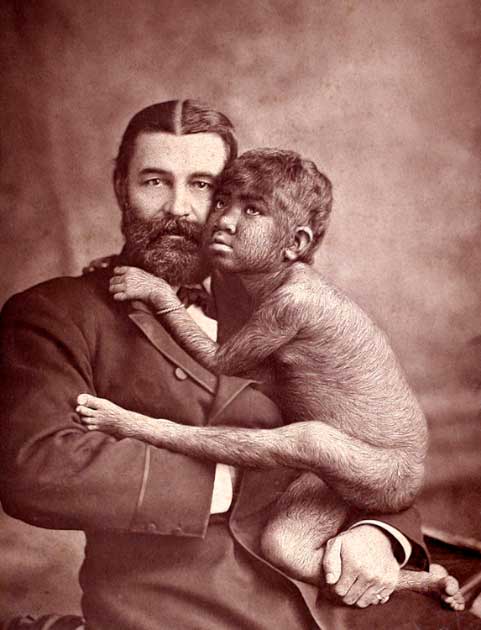The Kalahari Desert, in southern Africa, is not a hospitable place. Although nowhere near as large or as desolate as the great Sahara to the north, temperatures reach 110 degrees Fahrenheit (43 degrees C) and given the dryness and the vast emptiness, very little can survive there.
Given these challenges, the great Kalahari seems the last place that could hide the traces of a lost kingdom. And yet some have been convinced that, hidden in the heart of the great desert, something waits to be found.
The name Kalahari has a literal meaning of “The Great Thirst.” Yet, Kalahari was not always a desert region. The vegetation and fossils of that area show that the region used to be wetter and more fertile in an earlier time.
Did humans inhabit the Kalahari region once? Was the Kalahari Desert once the thriving African kingdom where people lived happily? In this article, we explore the possibilities of a lost city or kingdom present in the sandy, deserted lands of southern Africa.
Farini and his fascination with Kalahari
The Kalahari Desert would have possibly never been the focus of a search for a lost civilization if a Canadian explorer by the name of William Leonard Hunt did not write about a grand lost kingdom he thought was out there. Writing as the Great Farini, the explorer talked about the ruins of a lost kingdom deep inside a desert.
Many explorers after Farini have tried to find the mysterious city of Kalahari but to no avail. Inspired by the ruins that Farini first claimed he saw, many explorers have searched for his great city of Kalahari.
- Who Built the Abandoned City of Djado? A Saharan Mystery
- What Happened to Aksum, the Fourth Great Empire of the Ancient World?
It seems fanciful and it would be easy to dismiss the entire idea of a city existing inside Kalahari completely. After all, many towns and great cities have been lost throughout the course of world history, and rediscoveries continue to this day. One hundred and forty years ago, things were just getting started.
The Kalahari Expedition of 1885
The expedition of the Great Farini started from Cape Town, South Africa. He set out to find the city of Kalahari in February 1885. He was not alone, and many other adventurers who believed in his theory also accompanied him.

He also took his son Lulu with him on the expedition. Some native guides were also part of the journey so that the group could easily move towards the heart of Kalahari despite the difficult terrain.
But was Farini really looking for a lost city, or was that a convenient cover story to secure him the funding and support he needed? The reason behind this expedition launched by Farini was not really to find the historical marvel of a city but to find diamonds and riches that lay hidden in the Kalahari region.
Although there was no proof that such riches really existed in viable quantities, and even less that they would be found in these mysterious, still-to-be-discovered ruins of a city. Yet the possibility was enough, for him and the fellow travelers who were also lured in by the greed for gold and diamonds.
With the help of the native guides, the Westerners were able to make it deep inside the scorching desert. The area they found themselves in had till then been unreachable to outsiders. When the travelers returned from the heart of Kalahari, they had many unbelievable tales, and it is some of these stories which gave rise to the legend of the lost city.
When Farini returned later in 1885, he presented a report of his expedition to the Berlin Geographical Society in the same year. He also presented a report on his findings in front of the Royal Geographical Society of Great Britain, and went on to publish a book about his experience and sightings in the Kalahari, Through the Kalahari.
Farini’s Lost City
The most notable excerpts of the book pointed toward the existence of the magnificent ruins of a palace-like structure that hinted at the presence of a great kingdom there in bygone times. He describes these ruins as half-buried near a mountain or a ridge and also went on to talk about a wall or embankment that he thought resembled Chinese structures.
- Herodotus and the Lost Labyrinth of Egypt: Found at Last?
- Africa’s Strange Ruin: What Exactly Is Great Zimbabwe?
This could have been the ruins of a defensive structure that once protected his lost city. The wall ran for nearly a mile (1.6 km) and was extensive. In Farini’s eyes, the structure did not look all-natural and must have been made by men or people living there once upon a time.

He also mentioned that the wall has cement between the rocks which indicates that it was man made. He then went on to excavate the ruins with his team. Upon further exploration, the team found a small plaza with a Maltese cross in the middle.
However, unlike the ruins in Egypt or other African countries, Farini’s team did not find any hieroglyphics. There were no inscriptions or artifacts to be found in the structure. Therefore, no cultural evidence dating back to the lost era could be found.
Farini would say that the lost city was ancient and huge in scale. However, the lack of evidence about the existence of such a great structure made people believe that it might be the figment of Farini’s imagination.
Farini believed that the great city in the middle of Kalahari was ruined, and the population was wiped out either by a catastrophe or a disease outbreak. While Farini’s stories about the lost city of Kalahari lacked a body of evidence, they appealed to the audience because, in African legends, there have been many mentions of lost cities and the presence of enigmatic peoples. Europe was entranced by the vast, unexplored continent.
It is possible that Farini was right, but in truth whether he really found a lost city still remains a question. For example, in 1960s, a scientist named A.J. Clement carried out extensive research on the routes and areas that Farini claimed to visit.
He went on to say that Farini’s manmade wall could be a natural rock formation that had a mortar-like substance encrusted to it. It was easy to mistakenly think of it as a fortress wall in the middle of a heated desert that could create illusions in people’s minds.
Whether Farini’s claims and experiences were true or not, the lost city of Kalahari is one that explorers and historians have long been fascinated with. There have been many expeditions after Farini’s initial one. Nearly 30 explorations of Kalahari have happened, inspired by the words of Farini. However, no one has yet been able to locate the mysterious kingdom of Kalahari.
Top Image: Was he mistaken or was he lying, or did the Great Farini really find a lost city in the Kalahari? Source: Angela Harburn / Adobe Stock.
By Bipin Dimri